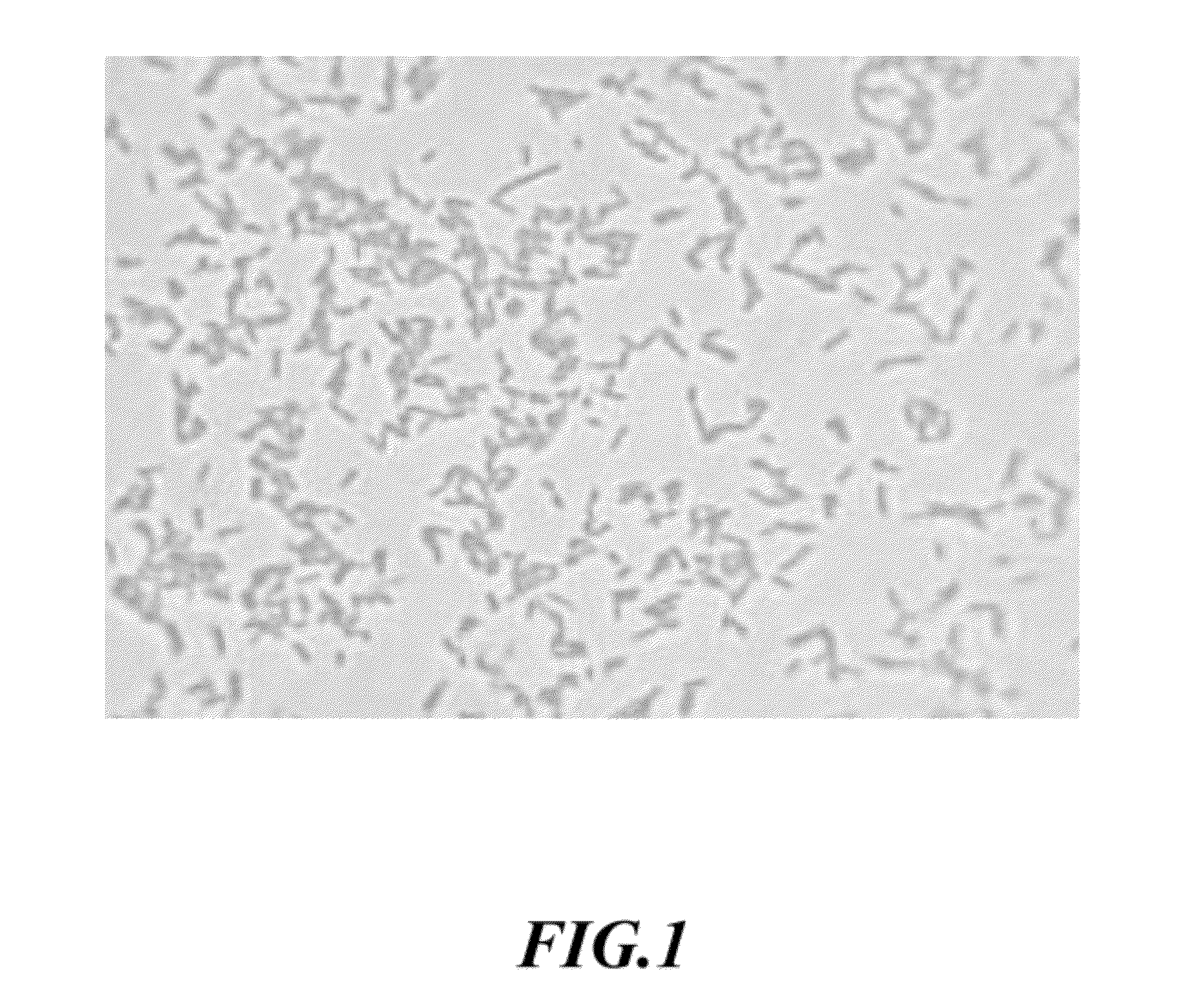Novel edwardsiella ictaluri e-ict-vl33 strain, vaccines thereof, and a method for protecting fishes using said vaccines
a technology of edwardsiella ictaluri and eictvl33, which is applied in the field of new edwardsiella ictaluri eictvl33 strain, can solve the problems of high mortality rate of fishes, septicemia or, ultimately, death, and high mortality rate of bacterial septicemia with a high mortality rate, and achieves the effect of higher survival rate of treated fish than the survival rate of untreated fish
- Summary
- Abstract
- Description
- Claims
- Application Information
AI Technical Summary
Benefits of technology
Problems solved by technology
Method used
Image
Examples
example 1
Isolation and Identification of Edwardsiella ictaluri E-ict-VL33 Strain
[0032]An isolated E-ict-VL33 strain was isolated from infected tra catfish (P. hypophthalmus). Bacterial culture grown in Brain Heart Infusion (BHI, the composition of BHI are shown in Table 1) broth for 18 hours at 25-30° C. was used for experimental infection. Bacteria growth on BHI agar for 48 h at 30° C. was used for bacterial identification.
TABLE 1The composition of BHI broth (Difco Laboratories, Sparks, MD)CompositionContentCalf Brains, Infusion from 200 g 7.7 gBeef Heart, Infusion from 250 g 9.8 gProteose Peptone10.0 gDextrose 2.0 gSodium Chloride 5.0 gDisodium Phosphate 2.5 gAdd water up to 1 literTotal 1 liter
[0033]The Characteristics of Edwardsiella ictaluri E-ict-VL33 Strain
[0034]FIG. 1 shows that the isolated E-ict-VL33 strain is a rod bacterium. An analysis of Gram staining shows that the isolated E-ict-VL33 strain is a Gram-negative rod bacterium. Referring to Tables 2 to 4, these tables show the g...
example 2
Preparation of Vaccines
[0039]Step 1 Cultivation and Collection of the Bacteria
[0040]The bacteria (Edwardsiella ictaluri E-ict-VL33 strain) were cultured in Brain Heart Infusion (BHI) broth at 28° C. for 48 hours, then collected in a bacteria suspension.
[0041]Step 2 Inactivated Processes
[0042]Inactivation of bacteria was done by adding 37% formaldehyde at a final concentration of 0.5% (w / v) to the bacteria suspension obtained in Example 1, and incubating (shaking) the bacteria suspension with formaldehyde at 25° C., 70 rpm for a minimum of 24 hours (preferably 48 hours). The bacteria (Edwardsiella ictaluri E-ict-VL33 strain) have to be verified as being completely inactive by a test. The supernatant of the bacteria suspension containing the formaldehyde was separated by using centrifugation at 9000×g to remove the formaldehyde, then suspending the pellet in a buffer solution (such as distilled water, phosphate buffered saline (PBS)). Finally, the vaccine stock containing inactivated ...
example 3
Preparation of Immersion Vaccine of Edwardsiella ictaluri E-ict-VL33
[0043]Vaccine stock obtained in example 2 were prepared as immersion vaccine by suspending the vaccine stock in a buffer solution (such as sterile water or PBS). The content of formaldehyde in the immersion vaccine is lower than 0.2% (v / v).
PUM
| Property | Measurement | Unit |
|---|---|---|
| temperature | aaaaa | aaaaa |
| time | aaaaa | aaaaa |
| time | aaaaa | aaaaa |
Abstract
Description
Claims
Application Information
 Login to View More
Login to View More - Generate Ideas
- Intellectual Property
- Life Sciences
- Materials
- Tech Scout
- Unparalleled Data Quality
- Higher Quality Content
- 60% Fewer Hallucinations
Browse by: Latest US Patents, China's latest patents, Technical Efficacy Thesaurus, Application Domain, Technology Topic, Popular Technical Reports.
© 2025 PatSnap. All rights reserved.Legal|Privacy policy|Modern Slavery Act Transparency Statement|Sitemap|About US| Contact US: help@patsnap.com



